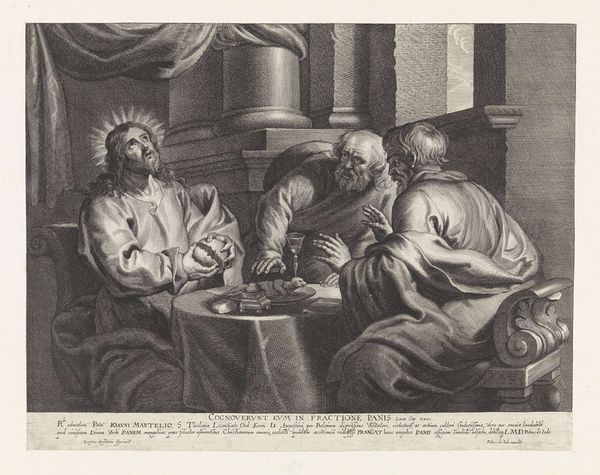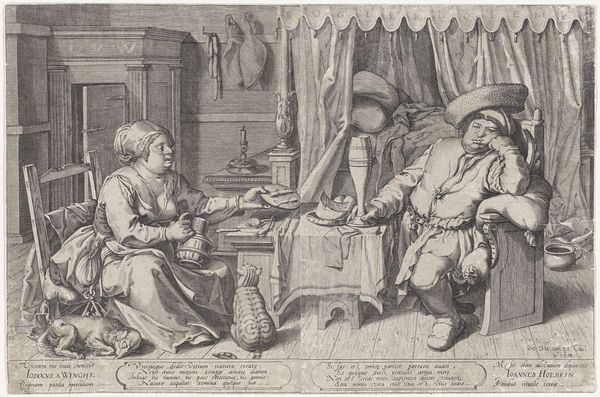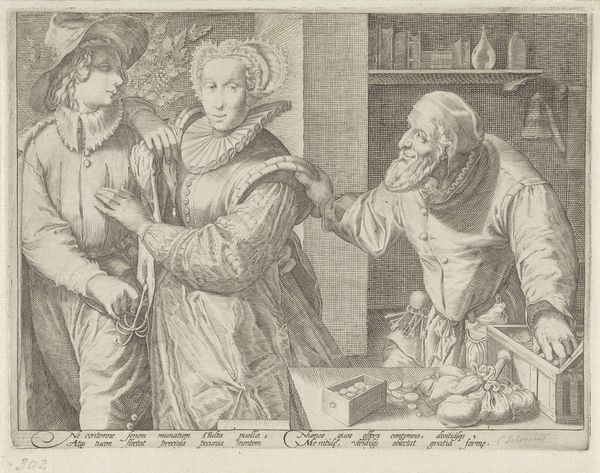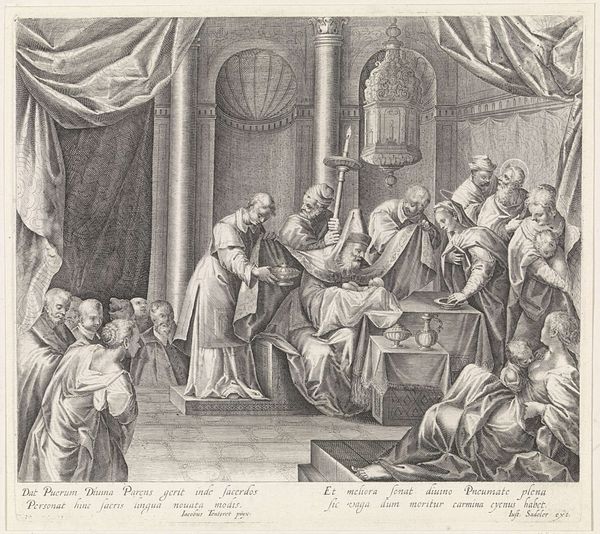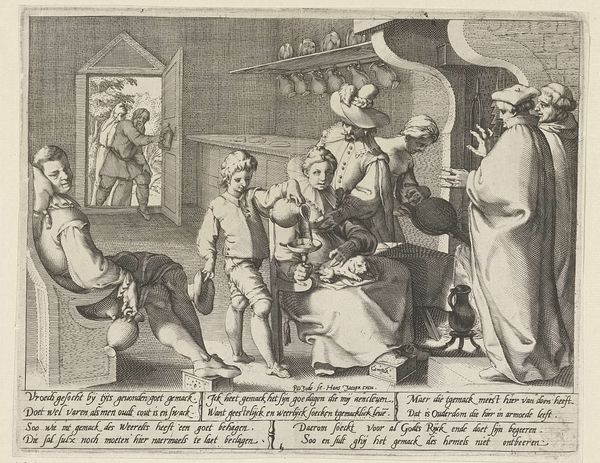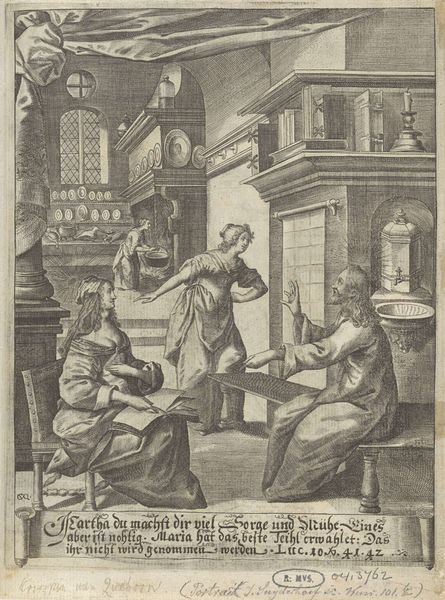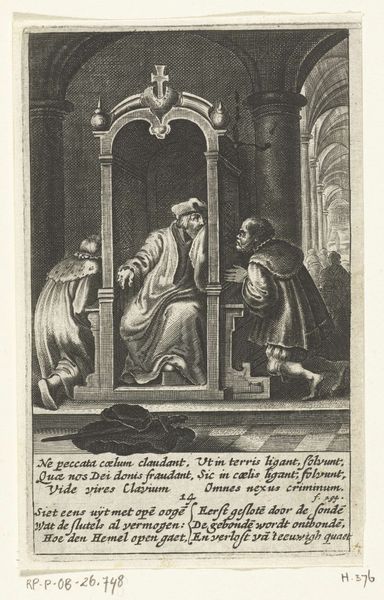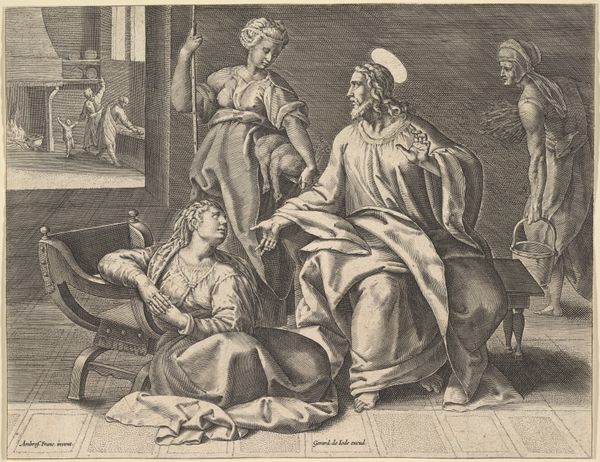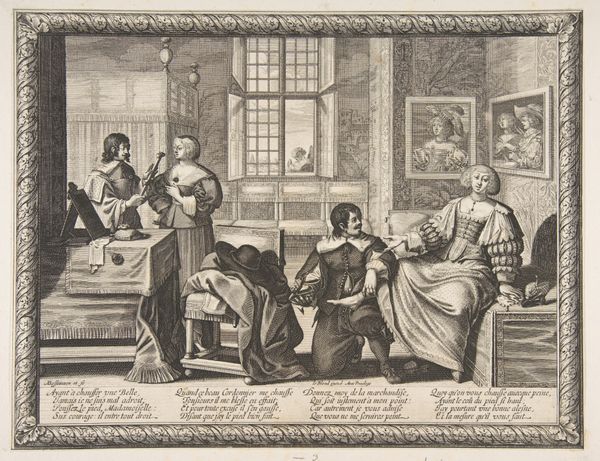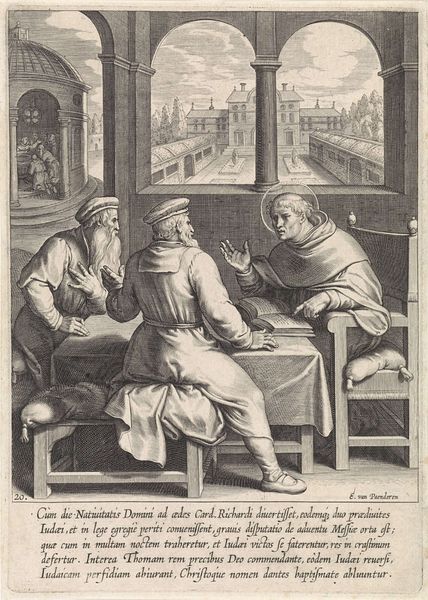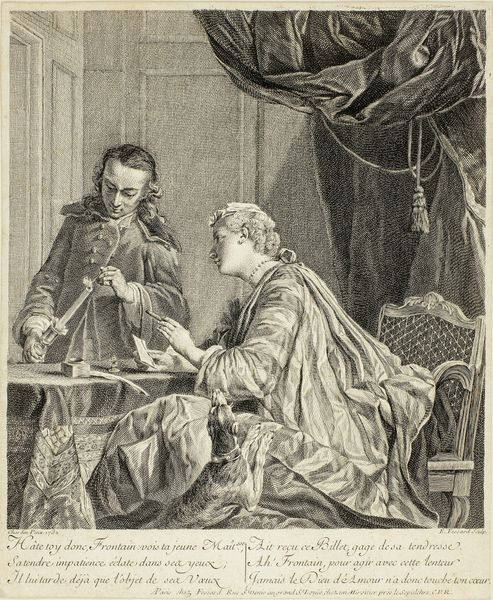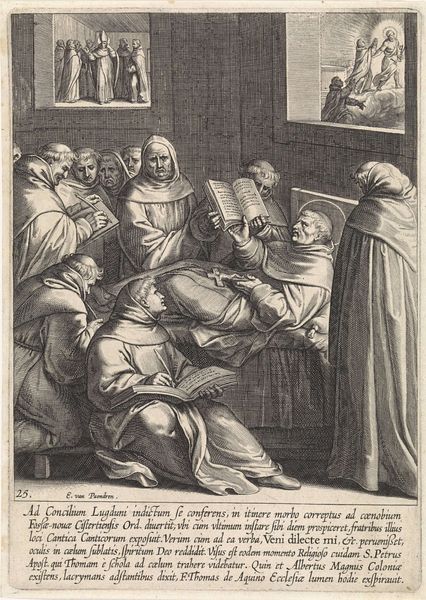
print, engraving
#
narrative-art
#
baroque
# print
#
caricature
#
figuration
#
pencil drawing
#
history-painting
#
engraving
Dimensions: height 279 mm, width 362 mm
Copyright: Rijks Museum: Open Domain
Editor: This is "Esau Selling His Birthright to Jacob," an engraving by Willem van Swanenburg from 1609, housed at the Rijksmuseum. It feels…theatrical, almost stagey with the curtained bed in the background. What can you tell me about the processes and materials used here, especially within its social context? Curator: It’s fascinating to consider the materials Swanenburg employs. This isn't just about aesthetics, but the social act of reproduction. The engraving allows for multiple impressions, wider distribution, and thus broader access to the narrative. It takes the biblical story out of the illuminated manuscript, democratizing the image, to some extent. Do you notice any relationship between content and dissemination? Editor: It's interesting how accessible that makes it. Was he thinking about how that access would impact the viewer? How might he consider class and societal expectations? Curator: Exactly. The act of creating multiple prints infers that this image and story were deemed valuable enough for consumption beyond a wealthy elite. How do you view Esau's offering of the birthright in connection to consumption and labor itself? Editor: I guess Esau's hunger driving him to trade the birthright reflects the immediate, bodily needs overshadowing long-term legacy and, therefore, all other considerations about labor or class. So, is Swanenburg, in making the print, creating a product for consumption, highlighting the ever present push and pull of base needs versus legacy, even in religious life? Curator: Precisely! This act of producing engravings becomes entwined with the very themes depicted. Labor is made readily available on the copper plate. With this piece in mind, how might that idea change your reading of other early 17th century art? Editor: I see your point! Looking at it as a product of its time highlights the role of art production itself as a commentary. Curator: Indeed, understanding art’s materiality brings fresh understanding.
Comments
No comments
Be the first to comment and join the conversation on the ultimate creative platform.
